
Entering the Eastern European market for cocoa
Most chocolate products manufactured and consumed in Eastern European countries demand bulk cocoa, mainly imported from Ivory Coast and Ghana. The high-quality market is developing slowly, with only a few companies operating in this niche segment. This means that competition is fierce in the Eastern European market both on standard quality and high-quality cocoas. Although certification is not a common consumer demand, the chocolate industry in most Eastern European countries is dominated by multinational chocolate manufacturers which implement their own sustainability policies, often requiring cocoa exporters to comply with certification.
Contents of this page
1. What requirements and certification must cocoa comply with to be allowed on the Eastern European market?
This study includes the following Eastern European Members of the European Union: Bulgaria, Croatia, Czech Republic, Hungary, Poland, Romania, Slovakia and Slovenia. Estonia, Latvia and Lithuania are not included.
Exporters need to comply with strict EU requirements to export cocoa beans to Eastern European markets. Our study on buyer requirements for cocoa provides a more complete overview of these standards. Consult the specific requirements for cocoa on the European Commission’s Access2Markets website.
Buyer requirements can be divided into:
- Musts: legal and non-legal requirements you must meet to enter the market
- Additional requirements: those you need to comply with to keep up with the market
- Niche requirements: applying to specific niche markets
Highlights for these requirements can be found below, specified for Eastern European markets where relevant.
1. Legal and non-legal requirements you must comply with
Legal requirements
You must comply with the European Union legal requirements for cocoa, which refer mostly to food safety and hygiene. In this regard, the most common applicable legal limits for food contaminants are:
- Pesticides: consult the EU pesticide database for an overview of the maximum residue levels (MRLs) for each pesticide
- Mycotoxins: ochratoxin A is of special relevance for cocoa
- Polycyclic-aromatic hydrocarbons (PAHs)
- Microbiological contamination such as from salmonella (although cocoa is considered low risk)
- Heavy metals such as cadmium, which is a particular problem for cocoa from some Latin American countries due to factors like volcanic activity and forest fires
Quality requirements
If you want to access the Eastern European market for cocoa beans, you will have to meet your buyer’s quality standards, which are particularly high within the specialty segment for fine flavour cocoa beans.
Buyers in Eastern Europe and elsewhere currently assess the quality and flavour of cocoa beans in different ways, often using a combination of two or more methodologies. The guide Cocoa Beans: Chocolate & Cocoa Industry Quality Requirements provides recommendations on cocoa growing, post-harvest practices and quality evaluation methods that contribute to cocoa quality.
Other cocoa quality assessment methodologies and international cocoa standards commonly used by chocolate makers and cocoa traders include the following:
- ISO’s Standards on classification and sampling for cocoa beans
- The Fine Cacao and Chocolate Institute (FCCI): check their website and contact FCCI for their sampling protocol and grading form
- Heirloom Cacao Preservation’s genetic evaluation of cocoa to identify and value cocoa and its flavour
- Equal Exchange/TCHO’s quality assessment and tasting guide to assess the quality of cocoa along the value chain
In addition, a workgroup coordinated by the Cocoa of Excellence Programme has launched the International Standards for the Assessment of Cocoa Quality and Flavour website, where you can download the first protocols on quality standards.
These protocols describe step by step how to: 1) sample cocoa beans for evaluation; 2) assess their physical quality; 3) process them into coarse powder, liquor and chocolate, and 4) establish a sensory evaluation of the flavours expressed in these three products.
Labelling requirements
The labelling of cocoa beans exported to Eastern Europe should comply with the general food labelling guidelines of the European Union. The information provided on labels must be easy to understand, easily visible, clearly readable, and should be written in a language easily understood by the purchaser. In most cases, this means labels should be written in English.
The label should include the following topics to ensure traceability of individual batches:
- product name
- grade
- lot or batch code
- country of origin
- net weight in kilograms
In case your cocoa is organic or fair trade certified, the label should contain the name and code of the inspection body and certification number.
Figure 1: An example of cocoa bean labelling
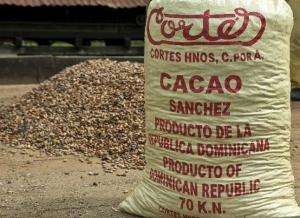
Source: Chocolate Cortés
Packaging requirements
Cocoa beans are traditionally shipped in jute bags, which can weigh between 60 kg and 65 kg. In the mainstream market, bulk shipment of cocoa beans has become more popular. This means cocoa beans are loaded directly into the ship’s cargo hold or in shipping containers containing a flexi-bag (see Figure 2). This mega bulk method is often adopted by larger cocoa processors, which handle cocoa beans of standard qualities.
In the specialty cocoa segment, jute bags are still commonly used. For very high-quality micro lots, vacuum-sealed GrainPro packaging can be used.
Figure 2: Examples of packaging for cocoa: jute bag, container-sized flexi-bag and GrainPro

Sources: Osu.edu, Bls.bulk.com and GrainPro
Tips:
- Read the study on buyer requirements for cocoa in Europe for the full buyer requirements. Activate the translation function of your browser to read the studies in your preferred language.
- Check the website of EURO-Lex for more detailed information about the regulations concerning cocoa products.
- Read more about the quality requirements of the European industry for cocoa beans on the Cocoa Quality website.
- Learn more about maintaining the quality of your cocoa during transportation on the website of the Transportation Information Service.
- Read more about delivery and payment terms for your cocoa bean exports in our study Organising Your Cocoa Bean Exports to Europe.
2. Additional requirements to keep up with the market
Additional food safety requirements
Western and Northern European buyers generally have stricter additional requirements than buyers in Eastern Europe. Nevertheless, expect buyers in Eastern Europe to also request extra food safety guarantees from you. Some of the production and handling processes you should consider implementing include:
- Good agricultural practices (GAPs): The main standard for good agricultural practices is provided by GLOBALG.A.P. This is a voluntary standard for the certification of agricultural production processes for safety and traceability of products. Note that certification organisations such as Rainforest Alliance/UTZ often incorporate GAP in their standards.
- Quality management system (QMS): A system based on Hazard Analysis and Critical Control Points (HACCP) is often a minimum standard required at the level of storage and handling of cocoa beans. If you export semi-finished cocoa products, some buyers will also expect you to have certifications for your manufacturing facilities, such as International Featured Standards: Food (IFS), Food Safety System Certification (FSSC 22000) and British Retail Consortium Global Standards (BRC).
Keep in mind that Eastern European importers might re-export cocoa beans to other destinations in Europe. Those subsequent buyers push their requirements forward to other players in the supply chain, which might increase the need for you to adopt specific certifications or standards. This will depend on the final market and market channel used.
Additional sustainability requirements
Corporate responsibility and sustainability have become very important in the entire European cocoa sector. The Eastern European cocoa market is dominated by multinational companies which have their own sustainability policies in place, such as Nestlé and Mondelez. Their policies emphasise contact with producers, transparency in operations, as well as social and environmental impact.
As an exporter, adopting codes of conduct or sustainability policies related to your company’s environmental and social impacts may give you a competitive advantage. In general, it is likely that buyers require you to comply with their own code of conduct and fill out supplier questionnaires about your sustainability practices.
Certification standards are usually part of the sustainability strategy of traders, cocoa processors, chocolate manufacturers and retailers. As such, a standard like Rainforest Alliance/UTZ has become increasingly important in the mainstream cocoa market. In 2021, 250 cocoa supply chain actors that operated in the studied Eastern European region were Rainforest Alliance/UTZ certified. The country with the largest number of these players was Poland (76), followed by Czech Republic (56) and Hungary (43). On the same list you find multinationals like Nestlé, as well as other chocolate producing companies like the Czech Chocoland and the Polish Union Chocolate.
Initiatives to develop legally binding measures for the use of sustainable cocoa at the EU level are ongoing. The European Commission is working on due diligence laws to protect and restore global forests. These regulations are expected to become operational in 2022. These laws will include measures to minimise the impact of EU consumption on the cocoa sector, which is seen as a risk commodity for deforestation. The largest cocoa companies, such as Barry Callebaut, Mars and Mondelez, support the call for the EU to adopt due diligence regulations. Once operational, buyers might download some of the regulation requirements to cocoa suppliers and exporters. The European Union also has plans to boost sustainable cocoa production in Ivory Coast, Ghana and Cameroon, providing training opportunities as well as specific requirements for exporters from these countries.
Tips:
- Refer to the International Trade Centre Standards Map or the Global Food Safety Initiative website to learn about the different food safety management systems, hygiene standards and certification schemes.
- Find out which standards or certifications are preferred by potential buyers in your target segment. Buyers may have preferences for a certain food safety management system or sustainability label, depending on their end clients and distribution channels.
- Carry out a self-assessment to measure how sustainable your production practices are. You can fill out this online self-assessment form by Amfori BSCI to assess your social performance. This Excel form by the Sustainable Agriculture Initiative Platform can be used to assess the sustainability performance of your farm.
- See our study on certified cocoa for more information about the demand for sustainable cocoa in the European market, trends and specific trade channels.
3. Niche requirements
EU Organic
The demand for organic-certified cocoa products in Eastern Europe is relatively small. Organic certification could become more relevant in the future, but to this day no immediate opportunities are visible. However, this does not mean that there are no chocolate manufacturers that require organic certification. For instance, Polish Octo Chocolate works with organic cocoa.
In case you want to market your cocoa as organic in the Eastern European market, it must comply with the regulations of the European Union for organic production and labelling. Obtaining the EU Organic label is the minimum legislative requirement for marketing organic cocoa in the EU.
Note that the new EU organic regulation came into force on 1 January 2021. This means that producers in third countries will have to comply with the same set of rules as those producing in the EU. Also, inspections of organic production and organic products has become stricter to prevent fraud.
Before you can market your cocoa beans as organic, an accredited certifier must audit your growing and processing facilities. Refer to this list of recognised control bodies and control authorities issued by the EU, to ensure that you always work with an accredited certifier. To become organic certified, you can expect a yearly inspection and audit which aims to ensure that you comply with the rules on organic production.
Note that all organic products imported into the EU must have an appropriate electronic Certificate of Inspection (COI). These COIs must be issued by control authorities prior to the departure of a shipment. If this is not done, your product cannot be sold as organic in the European Union and will be sold as a conventional product. COIs can be completed by using the European Commission’s electronic Trade Control and Expert System (TRACES).
Fair trade
The importance of Fairtrade certification in Eastern Europe is also relatively small. Nevertheless, Poland, Czech Republic and Slovakia are part of the World Fair Trade movement: the Polish Fairtrade Association (only joined in 2016) and Fairtrade Czech Republic and Slovakia. This should make it easier for manufacturers in these countries to obtain the Fairtrade certification. The presence of these associations will likely also drive consumer recognition of the Fairtrade label in Poland, Czech Republic and Slovakia, possibly leading to an increased demand for Fairtrade products.
In case you want to get Fairtrade certified, note that the accredited certifier for this standard is FLOCERT.
Tips:
- Learn more about organic farming and organic guidelines on the European Union website and the Organic Export Info website.
- Familiarise yourself with the range of organisations and initiatives that offer technical support to help you switch to organic farming. Start your search with the organic movement in your own country and ask if they have their own support programmes or know about existing initiatives. Refer to the database of affiliates of IFOAM Organics to search for organic organisations in your country.
- Find companies that specialise in organic products on the website of Organic-bio.
- Try to visit trade fairs for organic products, like Biofach in Germany. Check their website for a list of exhibitors, seminars and other events at this trade fair.
- If you produce cocoa according to a fair-trade scheme, find a specialised Eastern European buyer familiar with sustainable or fair-trade products, for instance, via the FLOCERT customer database.
- If you have more than one certification, try to combine audits to save time and money. Investigate the possibilities for group certification with other producers and exporters in your region as well.
2. Through what channels can you get cocoa on the Eastern European market?
Cocoa and cocoa products are used for processing in four different industries: confectionery, food, cosmetics and pharmaceutical. This document focuses only on the confectionery industry, which is the main segment for cocoa beans. The confectionery industry mainly processes cocoa liquor and butter into chocolate products, such as bars, candy bars and bonbons.
How is the end market segmented?
The confectionery industry can be segmented according to the quality of the end products. For cocoa beans, the end products mainly consist of candy bars and chocolate bars.
Figure 3: Chocolate market segmentation by quality

Source: ProFound
Supermarkets and hypermarkets are the leading sales channel for chocolates in Eastern Europe. Private label chocolate products are widely available. The market share for retailer’s private label brands in each Eastern European country comprised approximately a third of the total market in 2019.
The largest retailer groups in in Eastern Europe include:
- Hypermarket Kaufland, owned by the German Schwarz Gruppe – present in Bulgaria, Croatia, Czech Republic, Poland, Romania and Slovakia
- Supermarket Billa, owned by the German REWE Group – operates stores in Bulgaria, Czech Republic and Slovakia
- Supermarket Biedronka (Poland), owned by the Portuguese company Jerónimo Martins
- Supermarket Dino (Poland), owned by the Polish Grupo Dino
- Supermarket Albert (Czech Republic) and Mega Image (Romania), owned by the Dutch-Belgian group Ahold Delhaize
- Supermarket Konzum (Croatia), part of the Croatian Fortenova Group
- Hypermarket Tesco – present in Czech Republic, Hungary, Poland and Slovakia
- Discount supermarket Lidl (also part of the Schwarz Gruppe) – with stores in Bulgaria, Romania, Croatia, Hungary, Poland, Czech Republic, Slovakia and Slovenia
- Supermarket Spar, with stores in Croatia, Hungary, Poland and Slovenia
Low end: The low-end segment offers cheap chocolate products with low cocoa content. The products are often produced by large chocolate manufacturers using mainly bulk cocoa from West Africa (Forastero variety). Bulk cocoa is characterised by high volumes, low value and standard quality.
Low-end chocolate products are mainly found in supermarkets. These are usually mass-market products of big brands and retailers’ low-quality private label products. The table below provides examples of low-end product brands and indications of prices based on Auchan’s retail prices in Poland in 2021:
| Product | Pictures* | Price (€/kg) | |
| Lower end | Auchan (Private label, dark chocolate, 50%, 100 g) – manufactured by Terravita (Poland) | 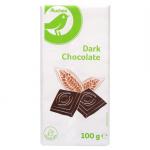
| 3.62 |
| Wawel (Dark chocolate, 70%, 100 g) – manufactured by Wawel (Poland) | 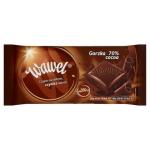
| 6.42 | |
| E.Wedel (Dark chocolate, 64%, 220 g) – manufactured by LOTTE Wedel (Poland) | 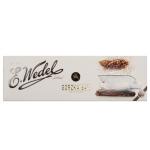
| 8.79 |
*Source of pictures: https://www.auchandirect.pl/auchan-warszawa/pl/slodycze-przekaski/slodycze/czekolady/c-13173
Middle range: The middle-range segment includes chocolate products of good quality, which are commonly sustainably certified. In the Eastern European chocolate market, Rainforest Alliance/UTZ certified cocoa is often used to certify middle-range products. Storytelling and the origin of the cocoa beans are increasingly important in this segment, mainly for marketing purposes.
Middle-range products are also mainly sold through supermarkets, usually the high-quality retailer category. Supermarkets increasingly offer their own premium private label chocolate products. These products offer similar quality and characteristics as branded products but are usually offered at more competitive prices.
The table below gives some examples of middle-range chocolate brands as well as an indication of consumer prices for these products based on Auchan’s retail prices in Poland in 2021:
| Product | Pictures* | Price (€/kg) | |
| Middle range | Auchan (Private label, dark chocolate, 75%, Peru, UTZ-certified, 90 g) – manufactured in France, distributed by Auchan Polska | 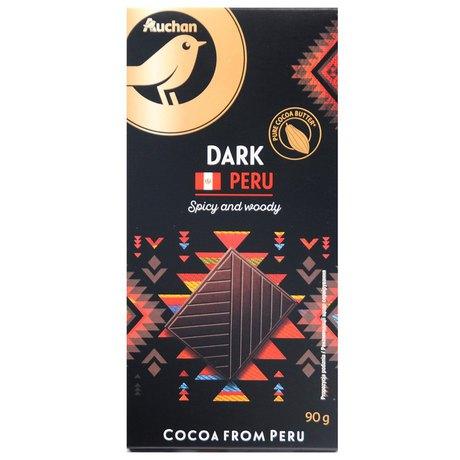
| 13.13 |
| Ritter Sport (Dark chocolate, 74%, cocoa mass from Peru, 100 g) – manufactured by Alfred Ritter GmbH & Co (Germany) | 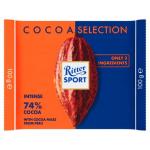
| 14.18 | |
| Zaini (Extra dark chocolate, 90%, 75 g) – manufactured by Luigi Zaini SpA (Italy) | 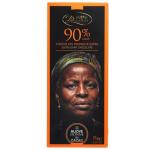
| 25.51 |
*Source of pictures: https://www.auchandirect.pl/auchan-warszawa/pl/slodycze-przekaski/slodycze/czekolady/c-13173
High end: Small, specialised chocolate makers produce high-end chocolate products, mainly using fine-flavour cocoa (usually Criollo and Trinitario varieties, and to a lesser extent Forastero). These products are characterised by high cocoa content. Single-origin cocoa beans are important, both for taste and traceability of the cocoa.
Bean-to-bar is one of the categories in the high-end chocolate market, which features brands such as 20 Chocolate (Slovenia), Lyra Chocolate (Slovakia), Manufaktura Czekolady (Poland), Choco Card (Hungary), Jordi’s Chocolate (Czech Republic), Thea's Chocolate (Romania) and Casa Kakau (Bulgaria). The website of the Fine Cacao and Chocolate Institute and this bean-to-bar website provide you with a good list of chocolate makers working with high-quality cocoa in Eastern Europe.
High-end products are mainly sold at chocolate events and in specialty shops. An example of a specialty shop in Eastern Europe is Pure Chocolate and Wellness, in Bulgaria. The table below provides examples and an indication of consumer prices for high-end chocolate products based on the retail prices of Cocoa Runners and Chocoladeverkopers in 2021:
| Product | Pictures* | Price (€/kg) | |
| High end | Rózsavölgyi Csokoládé, Hungary (Dark chocolate, 72%, Madagascar Sambirano Valley, organic, 70 g) | 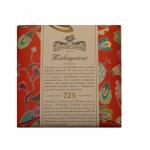
| 99.29 |
| Jordi’s Chocolate, Czech Republic (Dark chocolate, 75%, Tanzania, Kokoa Kamili Single Estate, 50 g) | 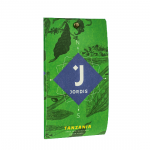
| 139.05 | |
Manufaktura Czekolady, Poland (Dark chocolate, 70%, Porcelana Blanca, Mexico, 55 g)
| 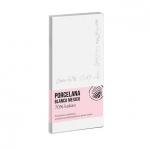
| 147.64 |
*Source of pictures: https://cocoarunners.com/
Exporters must note that trade prices and retail prices are not directly linked. As the below figure shows, only 6.6% of added value generally goes to farmers. In general, cocoa bean export prices and the share kept by cocoa producers will depend on the cocoa bean quality, the size of the lot and the supplier’s relationship with the buyer. The largest shares are kept by chocolate companies and retailers.
Tips:
- Check the websites of mainstream supermarkets, such as Auchan, to learn more about how they and price standard quality and speciality chocolate. Compare their product assortment and price levels with specialised stores, such as Cocoa Runners. Note that the prices at Auchan are in Polish złoty (PLN), and the prices at Cocoa Runners in pound sterling (GBP).
- Refer to our study on trends in the cocoa sector to learn more about developments within different market segments.
- If you are looking to sell high-quality cocoas to the Eastern European market, try to establish direct trade relationships with smaller traders and chocolate makers to find shorter entry channels into the market. Learn more about cocoa quality, for example, by participating in one of the cocoa programmes of the Chocolate Institute, such as the cocoa grading course or the specialty cocoa growing training.
Through what channels does cocoa end up on the end market?
As an exporter, you can use different channels to bring cocoa to the Eastern European market. Entering the market will vary according to the quality of your cocoa beans and your supply capacity. The largest importing countries in Eastern Europe or other large cocoa hubs in Europe, such as the Netherlands and Germany, are most likely your entry points into the Eastern European cocoa market.
Note that the European market is moving towards shortened supply chains, which means retailers and cocoa-processing companies are increasingly sourcing their cocoa beans directly from origin. The figure below shows you the most important channels for cocoa beans in Eastern Europe.
Figure 5: The main channels for export of cocoa to Eastern Europe
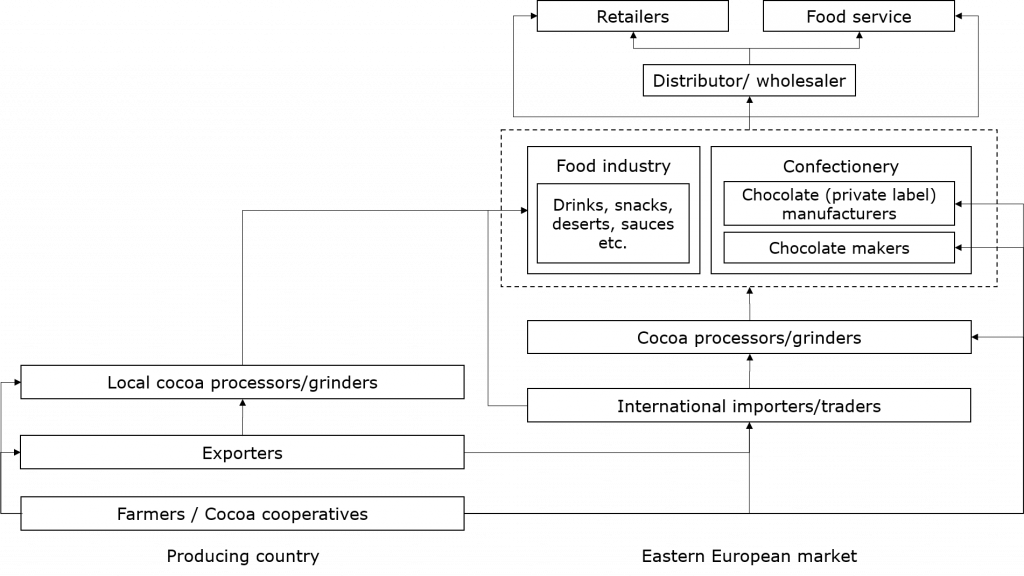
Source: ProFound
Cocoa bean processors and grinders
Large processors and grinders source their cocoa beans directly from producing countries. They process the raw material into cocoa mass, cocoa butter and cocoa powder, which they distribute to the confectionery, food, cosmetic and pharmaceutical industries throughout Europe. Some cocoa processors also manufacture end products to supply directly to the retail and food service sectors.
The large multinational Barry Callebaut has processing plants in Poland, a sales office in Czech Republic and another in Poland. Cargill, another large cocoa processer, does not have direct production facilities in the Eastern European market, but signed an agreement with Brenntag as the exclusive distribution partner in the region for its cocoa and chocolate product range for food manufacturers.
For whom is this an interesting channel? If you are an exporter of high volumes of bulk cocoa beans, then your direct trading partner is usually a cocoa grinder or processor. These companies tend to buy high volumes of standard qualities. They usually have cocoa-buying stations in producing countries to which you can sell your cocoa beans directly.
Importers
Importers of bulk cocoa beans normally handle large quantities and have direct contacts with exporters in producing countries. In most cases, importers have long-standing relationships with their suppliers. Importers either sell cocoa beans to companies in Eastern Europe or re-export them to other European buyers.
Barry Callebaut, for example, imports cocoa beans directly from origin. Food Trading Company (Poland) and M&S Trading SK (Slovakia) are among the importers that have cocoa beans in their portfolio.
There are only a few specialised cocoa bean importers active in the entire European market. Most high-quality chocolate makers in Eastern Europe will buy their cocoa beans from these specialty cocoa importers, such as Daarnhouwer (Netherlands), Silva Cacao (Belgium) and Twenty Degrees Cacao (United Kingdom, part of the Olam Cacao Group). These specialised importers usually handle smaller quantities, often working directly with producers and producer cooperatives, usually on projects with cocoa-producing cooperatives in origin countries.
Specialised importers could also be interested in value-added cocoa products processed at the country of origin, as described in our study on the European market for semi-finished cocoa products.
For whom is this an interesting channel? For exporters working with high volumes of bulk beans from producers and cooperatives, large companies that engage in cocoa processing activities and importing can serve as a gateway into the Eastern European market. If you deal with bulk cocoa, discuss certification possibilities with your buyer.
Farmers and farmers’ cooperatives with specialty or certified cocoa can best sell cocoa beans directly to specialised cocoa importers which prefer to work directly with producers and cooperatives and not through exporters.
If you produce or have very high-quality cocoa beans and are working through an importer, it might be interesting to discuss the possibilities to directly link up with high-end chocolate makers. This is mainly an opportunity for those that have the financial means and technical know-how to access the market directly.
Large (private label) chocolate manufacturers
The largest industrial chocolate manufacturer worldwide is Barry Callebaut, which has production facilities in Poland. Other large multinational chocolate manufacturers active in the Eastern European market include Ferrero with a chocolate factory in Poland, and administration and sales offices in Croatia, Czech Republic, Hungary, Poland, Romania and Slovakia. Nestlé has chocolate manufacturing sites in Bulgaria, Czech Republic, Hungary and Poland. Another multinational with solid presence in Eastern Europe is Mondelez, which has chocolate factories in Bulgaria, Poland and Slovakia. All of these companies have their own importing departments and source their cocoa beans directly from producing countries.
Other examples of larger chocolate manufacturers in the Eastern European market are Bonbonetti (Hungary), E. Wedel and Union Chocolate (Poland), Carla Chocolate and Chocoland (Czech Republic), and Zaharen Kombinat Plovdiv and Koleff (Bulgaria).
Private label manufacturers may also be an interesting entry point for your cocoa beans. Private label is growing across Europe, including Eastern Europe. The market share of private label in the region reached approximately one-third of the entire brand market in each country in 2019.
An example of a private label manufacturer in the region is Grupa Otmuchów (Poland).
For whom is this an interesting channel? Selling to these players is interesting if you have a steady supply of standard-quality cocoa beans available in large volumes.
Small chocolate makers
Especially in the specialty and fine flavour segment, cocoa beans are increasingly traded directly from farmers or farmer associations and cooperatives to chocolate makers. Although direct trade is growing, it still represents a very small part of the cocoa market. Not all chocolate makers are able to sustain direct trade and all the responsibilities that are usually outsourced to traders, such as logistics, documentation and pre-financing.
Direct trade can also happen with an importer as intermediary acting as a service provider and contact point in the transactions between the producer and the chocolate maker. Importers can also safeguard traceability and communicate the story of the cocoa beans accurately along the chain.
Examples of bean-to-bar specialised chocolate makers in Eastern Europe include Gaillot Chocolate and Chocoleya (Bulgaria), Taman Chocolates (Croatia), Jordi’s Chocolate and Mísina Cokoláda (Czech Republic), Rózsavölgyi Csokoládé (Hungary), Manufaktura Czekolady (Poland), Thea’s Chocolate (Romania), Lyra Chocolate (Slovakia) and 20 Chocolate (Slovenia).
For whom is this an interesting channel? Targeting specialty chocolate makers directly is recommended for producers and exporters dealing with specialty cocoa beans. This requires financial means and technical know-how to organise export activities. You could also consider setting up local processing facilities to add more value to your cocoa beans. Our study on the European market for semi-finished cocoa products discusses this subject more in depth.
Intermediaries and agents
Agents act as intermediaries between you, cocoa importers and chocolate makers. Some agents are independent, but others are hired to procure cocoa beans on behalf of a company. An agent acts as an intermediary and has the knowledge to evaluate and select interesting buyers for you. Examples of agents and brokers in Europe are Marex Spectron (United Kingdom), H.C.C.O Hanseatic Cocoa & Commodity Office (Germany) and Amius (United Kingdom).
For whom is this an interesting channel? If you have limited experience exporting to European countries, agents can play a very important role. Agents are also interesting if you have limited quantities of non-specialty cocoa or if you lack financial and logistical resources to carry out trade activities. Working with an agent is also useful if you need a trusted and reputable partner within the cocoa sector. Be prepared to pay a commission for their work.
Tips:
- Find buyers in Eastern Europe who match your business philosophy and export capacities in terms of quality, volume, certifications. For more tips on finding the right buyer for you, see our study on finding buyers in the European cocoa market.
- Attend trade fairs in Europe to meet potential buyers. Interesting trade fairs include Salon du Chocolat (France), Chocoa (Netherlands) and Biofach (Germany, for organic products). Attending in-person or virtual events can provide you with additional insight into the preferences of Eastern European buyers with regard to origin, flavour and sustainability certification. By understanding the market better, you can ensure that your specific product corresponds to buyers’ demands and requirements.
- Invest in long-term relationships. Whether you are working through an importer or directly with a chocolate maker, it is important to establish a strategic and sustainable relationship with them. This will help you manage market risks, improve the quality of your product and reach a fair quality-price balance. For more tips, read our study on doing business with European cocoa buyers.
3. What competition do you face on the Eastern European cocoa market?
Competition in the market for bulk cocoa with low added value is intense. This segment is mainly dominated by major suppliers and cooperatives able to deliver large quantities so they can compete on price. It is difficult for small and medium-sized companies to compete in this segment. In the specialty cocoa market, there is more focus on quality, taste and sustainability, reducing competition.
A relatively large share of the cocoa beans supplied to Eastern Europe are reimports from other European countries, making up 44% of the total supply. Among European suppliers, the Netherlands exported the largest volume of cocoa beans to Eastern Europe at 9,053 tonnes, mostly to Poland. Other important EU suppliers to Eastern Europe include the United Kingdom, Belgium and France, with respectively 3,350 tonnes, 2,890 tonnes and 2,321 tonnes in 2020.
Ivory Coast is the largest supplier of cocoa beans to Eastern Europe
Ivory Coast is the world’s largest cocoa bean producer, producing about 39% of the total global cocoa supply in 2019. In 2020, the country supplied over 16 thousand tonnes of cocoa beans directly to the Eastern European market, of which 9.3 thousand tonnes were imported into Bulgaria and 7.1 thousand tonnes into Poland. Ivory Coast supplies to to both countries increased in the period, as Bulgaria’s and Poland’s cocoa bean imports also increased over the years.
Ivory Coast mainly produces Forastero cocoa beans and focuses on the production of large volumes and low quality. Ivory Coast has a well-established cocoa supply chain, with a large presence of multinational processing companies, such as OLAM and Cargill, strongly linked to small cocoa producers and cooperatives.
The presence of these multinationals is also a driving force behind the growing cocoa-grinding industry in the country. Ivory Coast was the world’s second-largest cocoa grinder in 2019/20, with 610 thousand tonnes or 13% of global grindings. Ivory Coast aims to grind 1 million tonnes of cocoa beans by 2022, almost doubling its current output. Note that most grinding facilities in Ivory Coast are owned by multinationals, such as Cargill, Olam and Barry Callebaut.
A large share of cocoa produced in Ivory Coast is Rainforest Alliance/UTZ certified, which is a common market entry requirement of large manufacturers and retailers operating in mainstream markets. About 46% of the total 4.6 million hectares of cocoa production in Ivory Coast was Rainforest Alliance/UTZ certified in 2018. In comparison, approximately 16% of Ivory Coast’s cocoa production area was Fairtrade-certified in 2018. This article compares the Rainforest Alliance and Fairtrade standards.
Despite certification efforts, there are widespread sustainability concerns regarding the cocoa sector in Ivory Coast. For instance, cocoa farming has been identified as a main driver of deforestation, which contributes to climate change. As a response, industry players, donors and the governments of Ivory Coast and Ghana launched the Cocoa and Forests Initiative. In addition, child labour is a recurring concern in both countries, where an estimated 2.1 million children still work in cocoa fields.
In a bid to tackle farmer poverty, the governments of Ghana and Ivory Coast have raised the minimum export prices for cocoa to US$ 2,600 per tonne, with the addition of a fixed ‘living income differential’ on all their cocoa sales at US$ 400 per tonne), applicable from the 2020/21 crop.
Nigeria also an important cocoa bean supplier to Eastern Europe
Another important direct West African cocoa bean supplier to Eastern Europe is Nigeria, with direct cocoa bean supplies amounting to 3.8 thousand tonnes in 2020. Bulgaria was the sole destination of these cocoa beans. Other Eastern European countries may have also used Nigerian cocoa beans in their cocoa manufacturing activities, but they have imported the beans from other European countries, which is not tracked in the trade data.
According to FAOSTAT data, Nigeria was the world’s fourth-largest cocoa producer in 2019, after Ivory Coast, Ghana and Indonesia. Nigeria is, just like Ivory Coast, Ghana and Cameroon, an important producer and supplier of bulk cocoa to the international market. Cocoa production in Nigeria has remained relatively stable between 2016 and 2020, amounting to roughly 240 thousand tonnes per year.
Despite regular promises from the Nigerian government about investing in the country’s cocoa sector, cocoa farmers still lack the support to actually increase their incomes.
Liberia: receiving international support to position its cocoa sector more strategically
Liberia supplied 1.3 thousand tonnes of cocoa beans to Bulgaria in 2020. Liberia is a relatively small cocoa producing country, especially compared to the other cocoa supplying countries in West Africa. The Liberian production reached approximately 12 thousand tonnes in 2019, according to FAOSTAT data, equivalent to apporximately 0.2% of global production.
Although a relatively small player, the cocoa sector provides an important source of income for almost 40 thousand cocoa farmers in the country. Liberian cocoa is mainly geared towards the bulk market, fetching low market prices. In general, cocoa production skills and market access are hampering factors for the development of the sector. Meanwhile, international organisations such as ITC and GROW Liberia are providing support to help Liberia improve its international positioning in the cocoa market. Their support focuses on improving the quality and traceability of Liberian cocoa.
Ecuador: large supplier of fine flavour cocoa
Ecuador is another important cocoa bean supplier to Europe, including 482 tonnes directed to Eastern Europe in 2020 — almost all destined to the Polish market. Ecuador is the world’s largest fine flavour cocoa producer: approximately 75% of its cocoa exports are also fine flavour. According to FAOSTAT data, Ecuador was the world’s fifth-largest cocoa producer in 2020.
Ecuador’s government and cocoa association have implemented several support measures over the years to help farmers invest in higher productivity and high-quality cocoa. As a result, Ecuador’s cocoa output grew from less than 200 thousand tonnes in 2010 to beyond 325 thousand tonnes in 2020.
Ecuador strongly promotes its cocoa beans’ origin, an important promotional element that may help raise retail prices by 51% and improve consumer appreciation in the growing European online retail space.
The European Union regulation limiting the maximum amounts of cadmium in cocoa products has affected Ecuador heavily, since cadmium contamination is high in some cocoa-growing regions in Ecuador, which has led buyers to source from alternative origins.
DR Congo has become an established supplier of organic cocoa beans
The Democratic Republic of the Congo supplied an estimated 323 tonnes of cocoa beans to Bulgaria in 2020. DR Congo has grown from an emerging to an established organic cocoa supplier to the European cocoa market after heavy investments in the country’s cocoa sector by donors and companies. There have also been initiatives to profile DR Congo as a destination for fine flavour cocoa.
DR Congo supplied an estimated 5.7 thousand tonnes in 2019, equivalent to 8.6% of total EU organic cocoa imports for that year. This makes DR Congo the fourth-largest supplier of organic cocoa to the EU. Globally, DR Congo is the third-largest organic cocoa producer with an estimated 72 thousand hectares dedicated to producing organic cocoa in 2019.
DR Congo attracts greater interest from buyers searching for alternative sources of organic cocoa beans with lower cadmium contamination than Latin American sources.
Tips:
- Identify your potential competitors. To be successful as an exporter, it is important to learn from them. Focus on their marketing strategies, the product characteristics they highlight and their value addition approaches. Successful companies that already export to the European market from which you can learn include Casa Franceschi (Venezuela), Hacienda Betulia (Colombia), Ingemann (Nicaragua) and Xoco Gourmet (Honduras, Guatemala, Belize and Nicaragua).
- Identify and promote your unique selling points. Give detailed information about your cocoa growing region and origin, the varieties, qualities, processing techniques and certification of the cocoa you offer. You can also tell the history of your organisation, your cocoa growing farm(s) and the passion and dedication of the people working there. These are all elements that make your company unique. Read our study on how to do business with European cocoa buyers to find more tips on how to market your cocoa.
- Get acquainted with the specifics of supplying certified cocoa or specialty cocoa to the European market. Read our studies to find tips on how to enter the European market with high-quality or certified cocoa.
- Actively promote your company on your website and at trade fairs. Flavour quality competitions also provide good opportunities to share your story, such as the International Chocolate Awards of the Cocoa of Excellence Programme.
- Work with other cocoa producers and exporters in your region if your companies or product volumes are small. Together you can promote good-quality cocoa from your region and be perceived as more attractive and more competitive in the European market.
- Develop long-term partnerships with your buyers. This implies always complying with buyers’ requirements and keeping your promises. This will provide you with a competitive advantage, more knowledge and stability in the Eastern European market.
- Check possible programmes to support your crop and crop productivity. Check for possibilities with the ministry of agriculture in your country and other local programme providers. Check also if there are local support programmes in your region managed by the Food and Agriculture Organization (FAO), International Finance Corporation (IFC), World Agroforestry Centre (ICRAF) or other organisations.
This study was carried out on behalf of CBI by ProFound – Advisers In Development.
Please review our market information disclaimer.
Search
Enter search terms to find market research